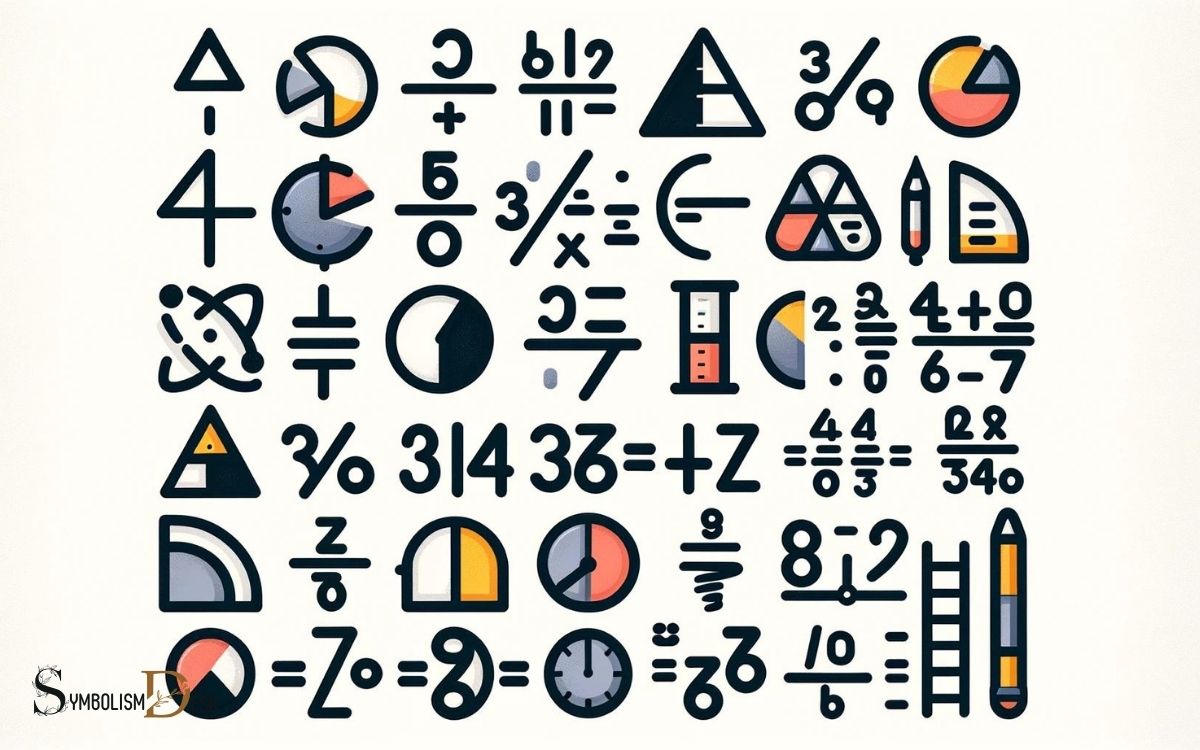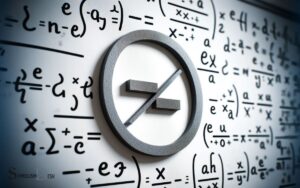Math Symbols Copy Paste Fraction: Clarity!
Math symbols, such as fractions, are key to effective mathematical communication. Copying and pasting these symbols into digital content ensures precision and clarity.
Utilizing Unicode characters and division symbols can greatly improve the readability of mathematical expressions.
This guide is designed to assist you in seamlessly integrating fractions and other math symbols into your digital documents and platforms.
In digital documents, fractions can be represented in various ways:
These Unicode characters can be copied from character map applications or online resources and pasted directly into your content.
Effortlessly incorporate fractions into your content with Unicode characters to enhance readability and precision.

Key Takeaway
Comprehensive List of Math Fraction Symbols for Copy and Paste
| Fraction | Unicode | HTML Entity | Description |
|---|---|---|---|
| 1/2 | U+00BD | ½ | One half |
| 1/3 | U+2153 | ⅓ | One third |
| 1/4 | U+00BC | ¼ | One quarter |
| 2/3 | U+2154 | ⅔ | Two thirds |
| 3/4 | U+00BE | ¾ | Three quarters |
| 1/8 | U+215B | ⅛ | One eighth |
| 5/8 | U+215D | ⅝ | Five eighths |
| 7/8 | U+215E | ⅞ | Seven eighths |
Understanding Math Symbols
The understanding of math symbols is fundamental to effectively communicating and solving mathematical problems. Math symbols serve as a universal language, allowing mathematicians to convey complex concepts with precision and brevity.
From basic operations like addition and subtraction to advanced calculus and algebra, symbols such as +, -, x, ÷, =, <, and > are essential for representing mathematical relationships and operations.
Additionally, symbols like π, √, and Σ hold specific meanings and are crucial for expressing geometric and arithmetic concepts.
Mastery of these symbols is essential for students and professionals alike, enabling them to interpret and solve mathematical problems accurately.
Therefore, developing a solid comprehension of math symbols is an indispensable skill for anyone seeking proficiency in mathematics.
Copying and Pasting Fractions
An essential skill when working with mathematical content on digital platforms is the ability to accurately copy and paste fractions.
To ensure precision when copying and pasting fractions, consider the following:
- Use a Reliable Source: Obtain the fraction from a trusted mathematical website or software to ensure accuracy.
- Selecting the Fraction: Carefully select the entire fraction, including the numerator, denominator, and any associated symbols, to avoid errors.
- Pasting the Fraction: Use the appropriate keyboard shortcuts or right-click and select “paste” to accurately transfer the fraction to the desired location.
- Formatting Considerations: Ensure that the pasted fraction appears correctly in the target document or platform by checking for any formatting discrepancies.
By mastering the art of copying and pasting fractions, one can effectively convey mathematical concepts in digital formats.
Utilizing Mathematical Operators
The use of mathematical operators in symbolic representation plays a crucial role in various mathematical fields. These operators provide a concise and powerful way to express mathematical ideas and operations.
Understanding the practical applications of these symbols can greatly enhance problem-solving skills and mathematical communication.
Symbolic Representation in Math
Utilizing mathematical operators allows for the symbolic representation of mathematical concepts and relationships in a concise and precise manner. This symbolic representation aids in conveying complex ideas and equations efficiently.
Here are some key ways in which mathematical operators are utilized for symbolic representation:
- Arithmetic Operations: Mathematical operators such as + (addition), – (subtraction), * (multiplication), and / (division) are used to represent basic arithmetic operations.
- Relational Operators: Symbols like = (equal to), < (less than), and > (greater than) are employed to denote the relationship between two quantities.
- Logical Operators: Mathematical symbols like ∧ (logical AND), ∨ (logical OR), and ¬ (logical NOT) are used to represent logical operations in mathematical logic and computer programming.
- Set Theory Operators: Symbols such as ∈ (element of), ∪ (union), and ∩ (intersection) are utilized to represent set theory operations in mathematics.
Practical Applications of Symbols
Practical applications of mathematical operators in symbolic representation offer efficient ways to model and solve real-world problems.
These symbols, such as +, -, ×, ÷, and =, are essential for expressing relationships and performing calculations in various fields.
In engineering, mathematical operators are used to design structures, analyze systems, and optimize processes.
For instance, in civil engineering, the division symbol (÷) is employed to calculate the load-bearing capacity of materials, while the multiplication symbol (×) is used to determine the dimensions of structural components.
In finance, mathematical operators aid in computing interest, analyzing investment returns, and managing risk.
Additionally, in computer science, these operators are fundamental for developing algorithms, processing data, and designing software.
Overall, the practical applications of mathematical symbols are integral to problem-solving across diverse disciplines.
Incorporating Division Symbols
How can division symbols be effectively integrated into mathematical expressions to convey precise and accurate computations?
Division symbols play a crucial role in mathematical expressions, allowing for the accurate representation of operations involving the division of numbers or variables.
Here are some key considerations for incorporating division symbols:
- Placement: Ensure the clear placement of the division symbol to demarcate the numerator and denominator effectively.
- Parentheses: Implement parentheses to enhance clarity, especially when the division is part of a more complex expression.
- Fraction Format: Utilize the fraction format to explicitly represent division, particularly when dealing with rational numbers or algebraic expressions.
- Consistency: Maintain consistency in the usage of division symbols throughout the mathematical expression to avoid ambiguity and misinterpretation.
Inserting Fractional Notations
To effectively convey fractional notations in mathematical expressions, it is essential to utilize the appropriate symbols and formatting.
Fractional notations can be inserted using the forward slash (/) for simple fractions, but for more complex or stacked fractions, it is crucial to use the appropriate math symbols. Furthermore, in digital communication, using math symbol emojis can also help to visually represent fractions in a clear and concise manner. Additionally, in formal mathematical writing or notation, using the appropriate symbols can eliminate any confusion and ensure accuracy in representing complex fractions. Overall, using the correct math symbols and emojis can aid in effectively communicating and representing fractions in various contexts.
In standard mathematical notation, the horizontal line is used to represent the division, with the numerator above and the denominator below the line.
This can be achieved using a variety of methods, including superscript and subscript formatting, or specialized fraction characters, such as Unicode characters.
Utilizing these methods ensures that fractional notations are accurately represented in mathematical expressions, aiding in clear and precise communication of mathematical concepts.
Using Unicode for Math Symbols
Transitioning from the discussion of inserting fractional notations, the incorporation of Unicode characters is essential for accurately representing a wide range of math symbols in digital documents.
Unicode provides a standardized way to represent text and symbols across different platforms and devices, making it a valuable tool for accurately depicting mathematical expressions.
Here are four key points to consider when using Unicode for math symbols:
- Comprehensive coverage: Unicode includes a vast array of math symbols, including operators, arrows, geometric shapes, and more.
- Consistency and compatibility: Unicode ensures that math symbols appear consistently across different devices and software applications, promoting seamless communication and document sharing.
- Accessibility: Unicode allows for the inclusion of math symbols in a wide range of digital content, making mathematical notation more accessible to a global audience.
- Future-proofing: As Unicode continues to evolve, it offers ongoing support for new math symbols and improved compatibility, ensuring that digital documents remain relevant and accurate.
Enhancing Text With Math Fractions
The incorporation of math fractions into digital documents is essential for accurately representing numerical relationships within mathematical expressions, leveraging the comprehensive coverage and consistency provided by Unicode characters.
When utilizing math fractions in digital text, it is crucial to ensure that the characters used are compatible across different platforms and devices.
By employing Unicode characters for math fractions, text can maintain its integrity and display fractions consistently, regardless of the software or device used for viewing.
This ensures that the intended mathematical expressions are accurately conveyed to the reader, without any distortion or misinterpretation.
Furthermore, the use of Unicode for math fractions facilitates seamless copy-pasting and sharing of mathematical content, allowing for clear and precise communication of numerical relationships in various digital documents.
Tips for Displaying Math Symbols
Displaying math symbols effectively requires attention to detail and consistent usage of Unicode characters.
To ensure that math symbols are displayed correctly, consider the following tips:
- Use Unicode: Utilize Unicode characters to display math symbols accurately across different platforms and devices.
- Check Font Support: Verify that the font being used supports the specific math symbols required for display.
- HTML Entity Codes: When working with web content, use HTML entity codes for math symbols to ensure proper rendering in browsers.
- Math Typesetting Software: Consider using math typesetting software such as LaTeX for complex mathematical expressions to ensure accurate and consistent display.
Conclusion
Incorporating math symbols and fractions into written text adds depth and clarity to mathematical concepts. The use of Unicode and copying and pasting techniques can enhance the display of mathematical operations, making them easier to understand and interpret.
By utilizing these methods, writers can effectively convey complex mathematical ideas with precision and accuracy, creating a visually appealing and informative experience for the audience.






